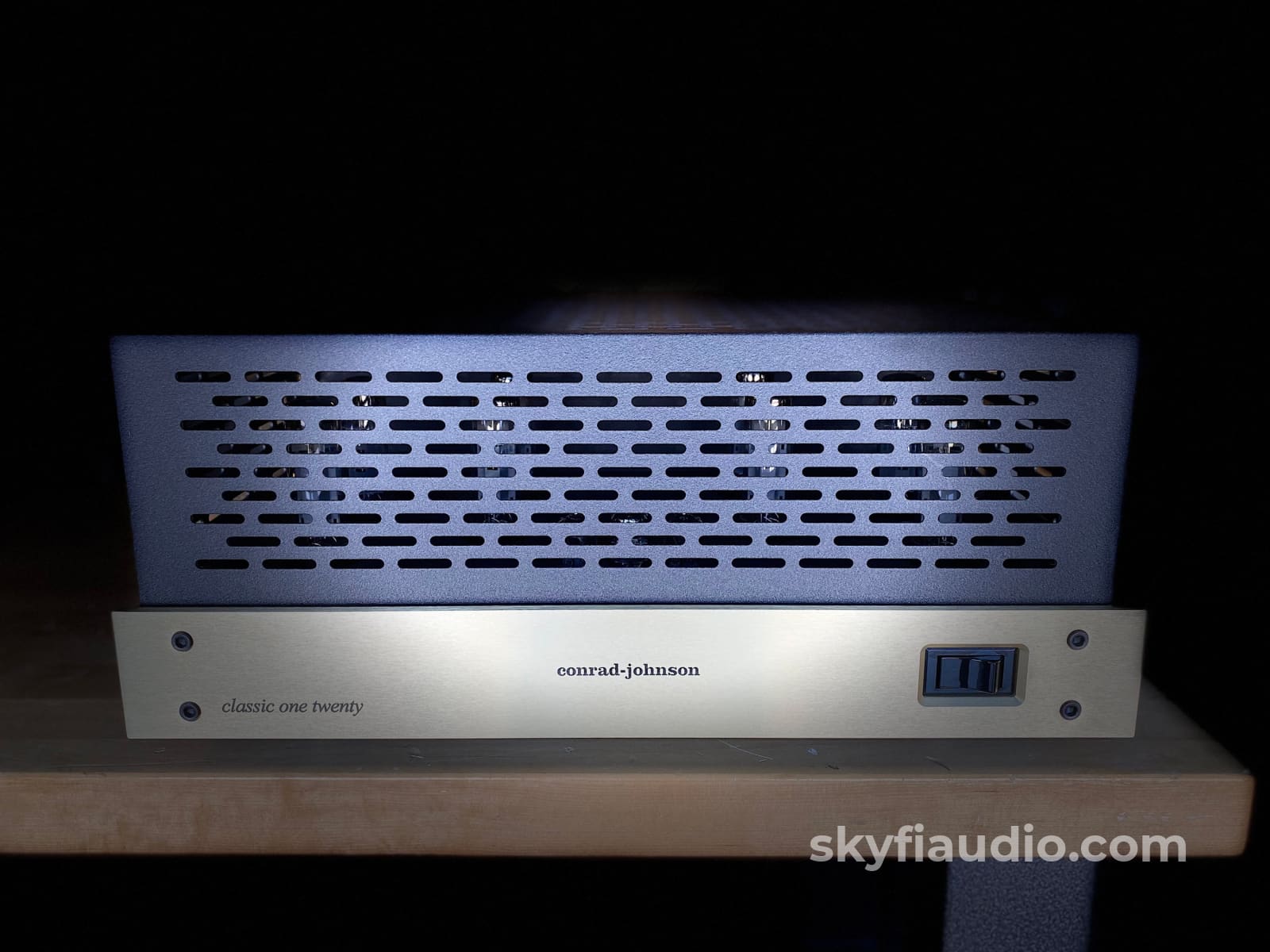

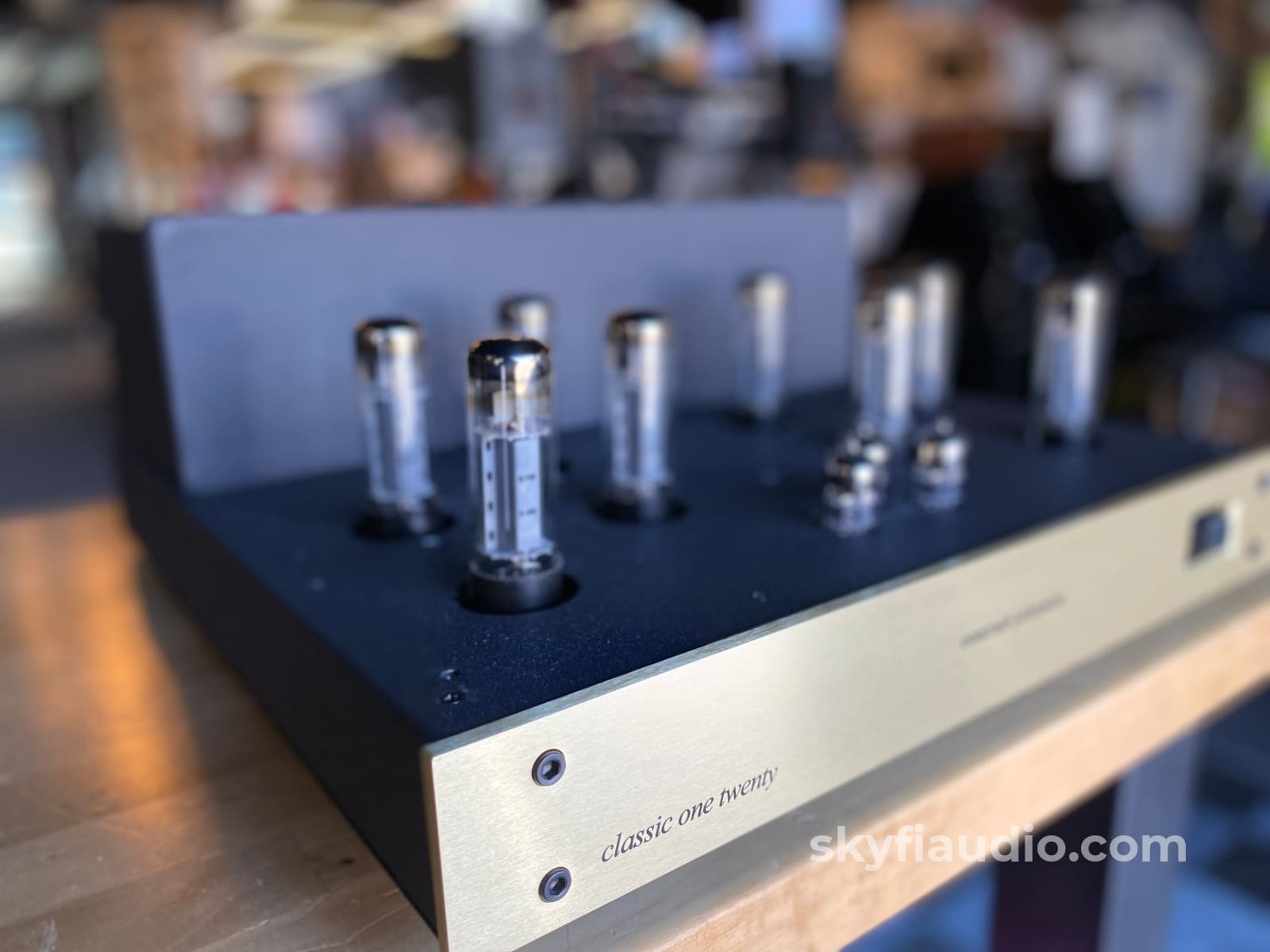
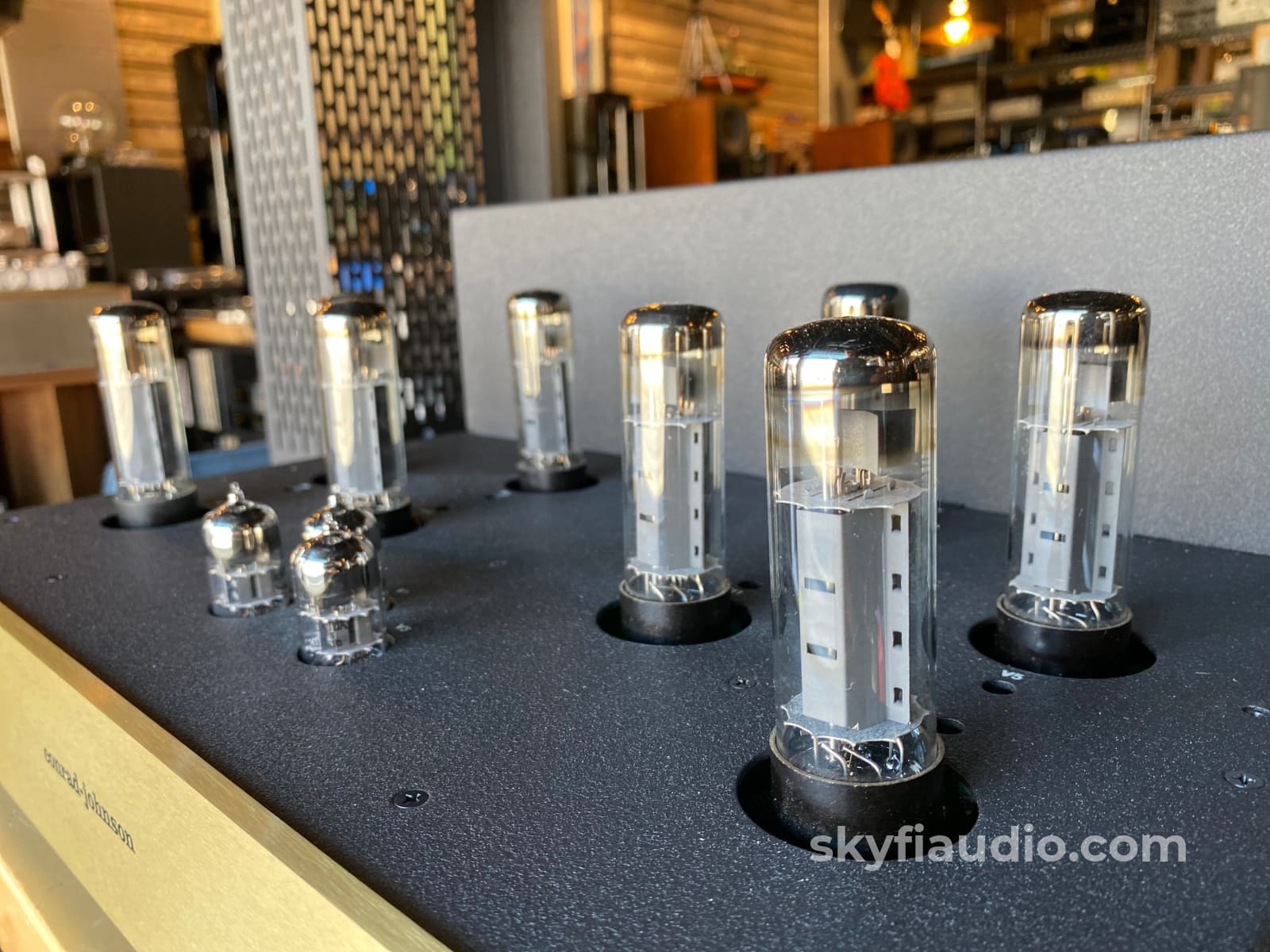
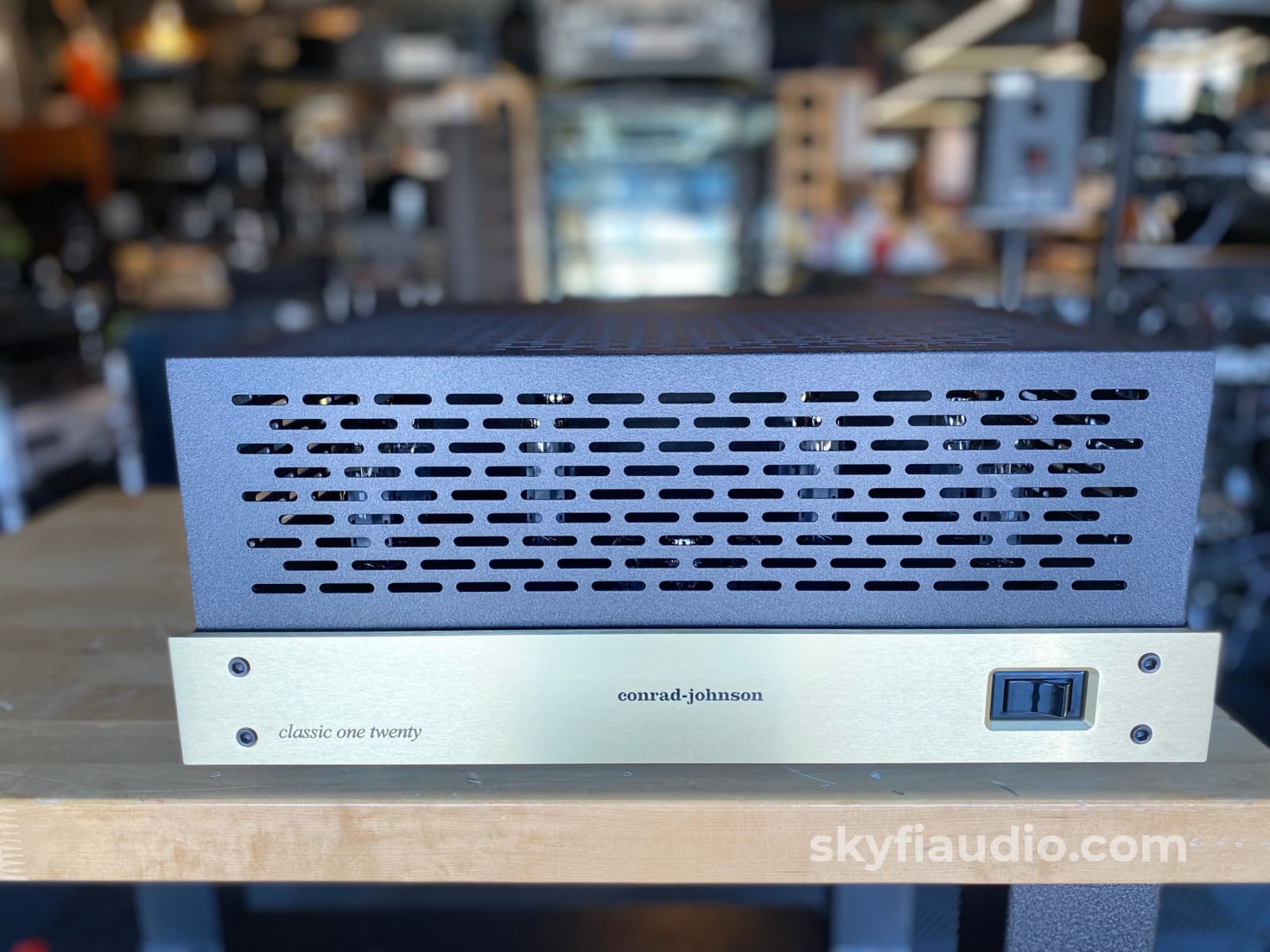
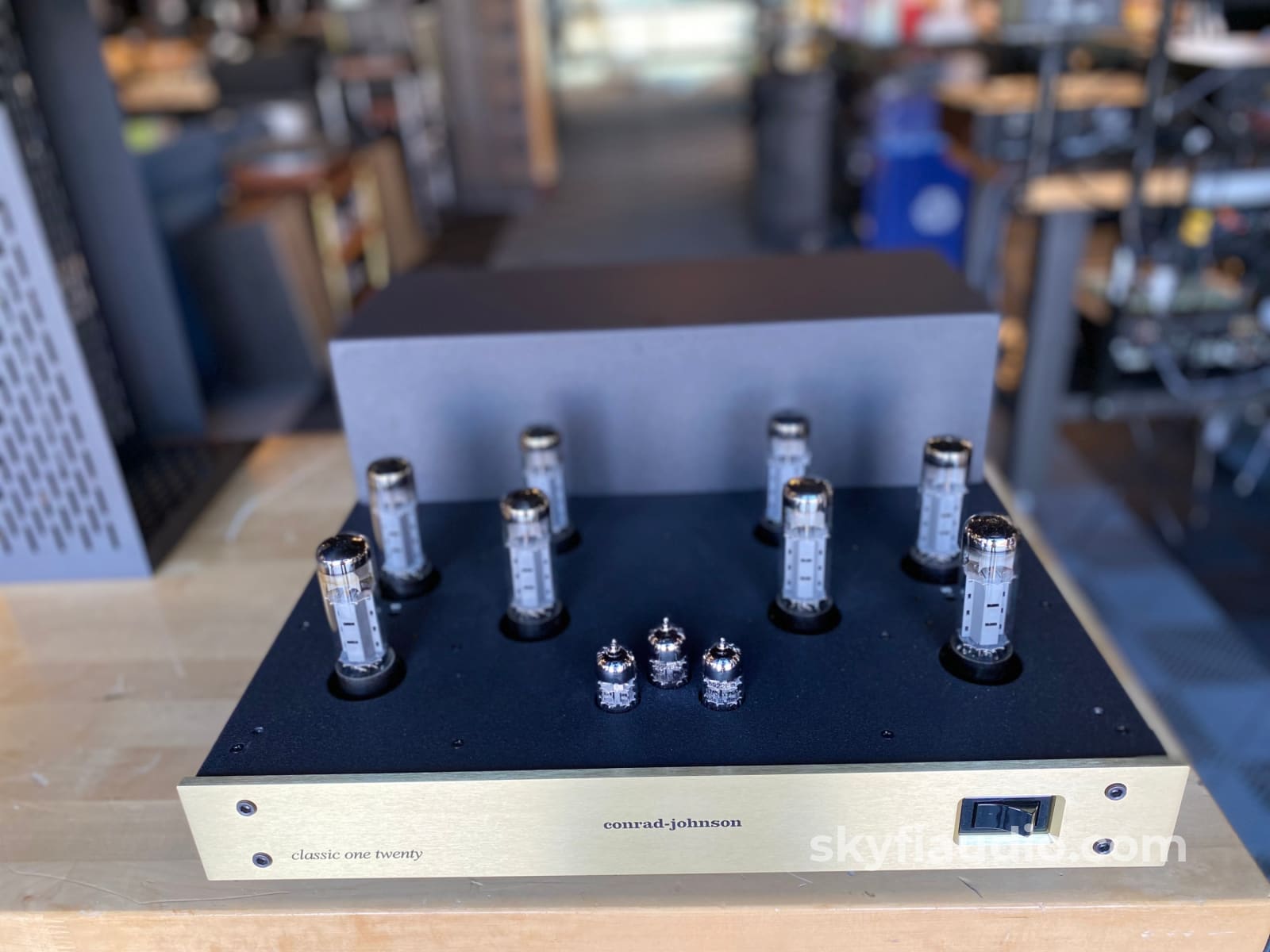
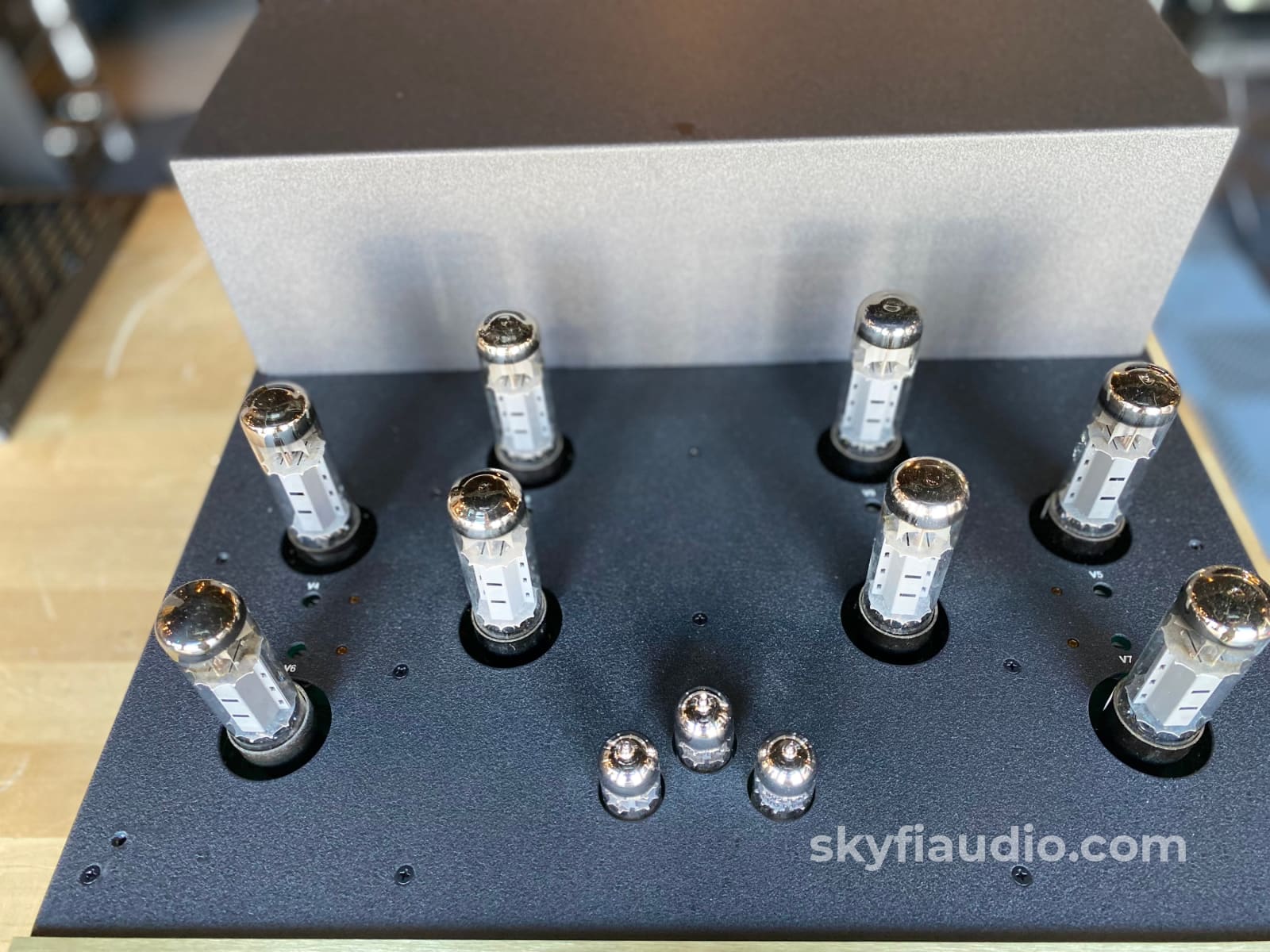
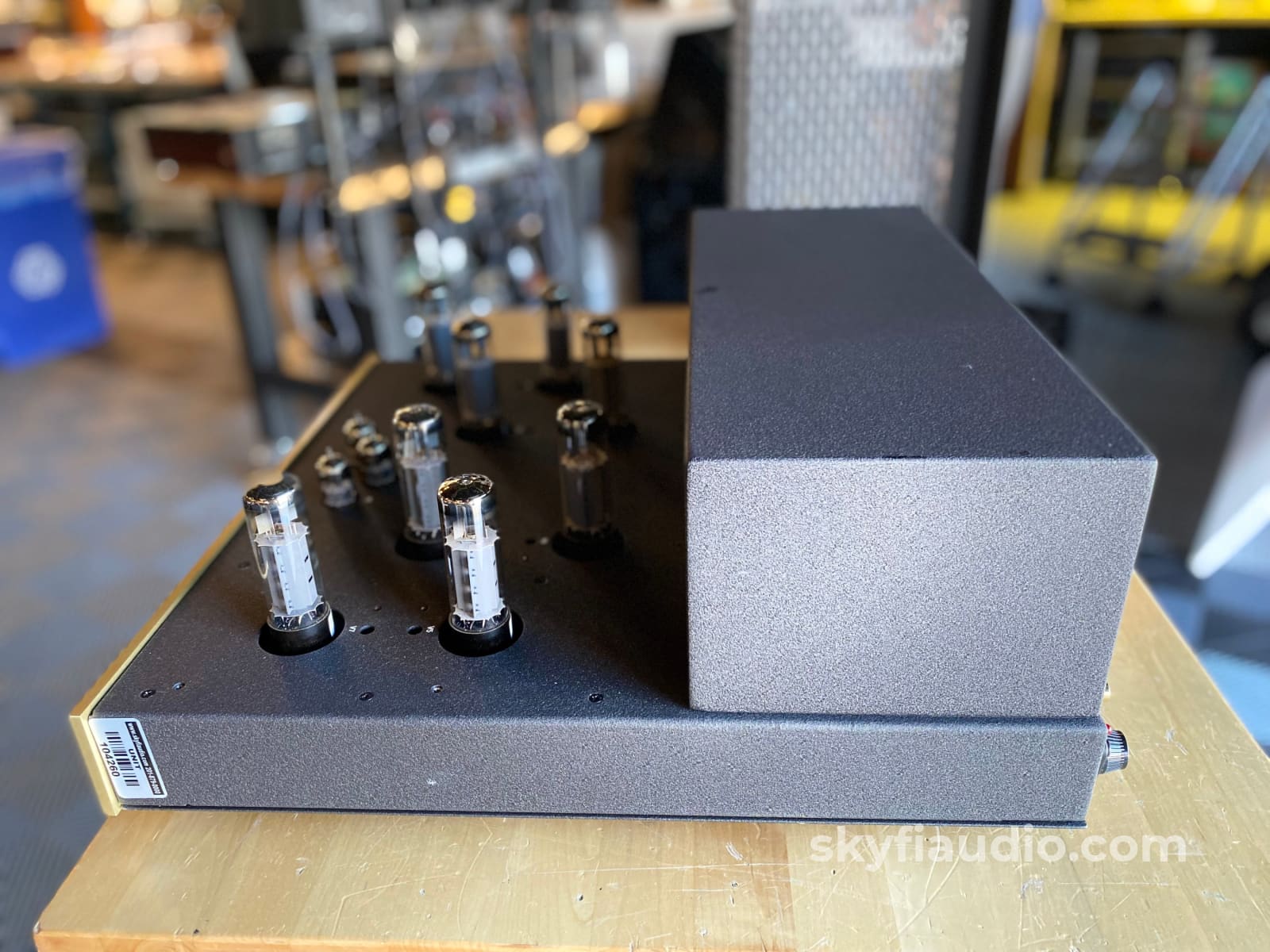
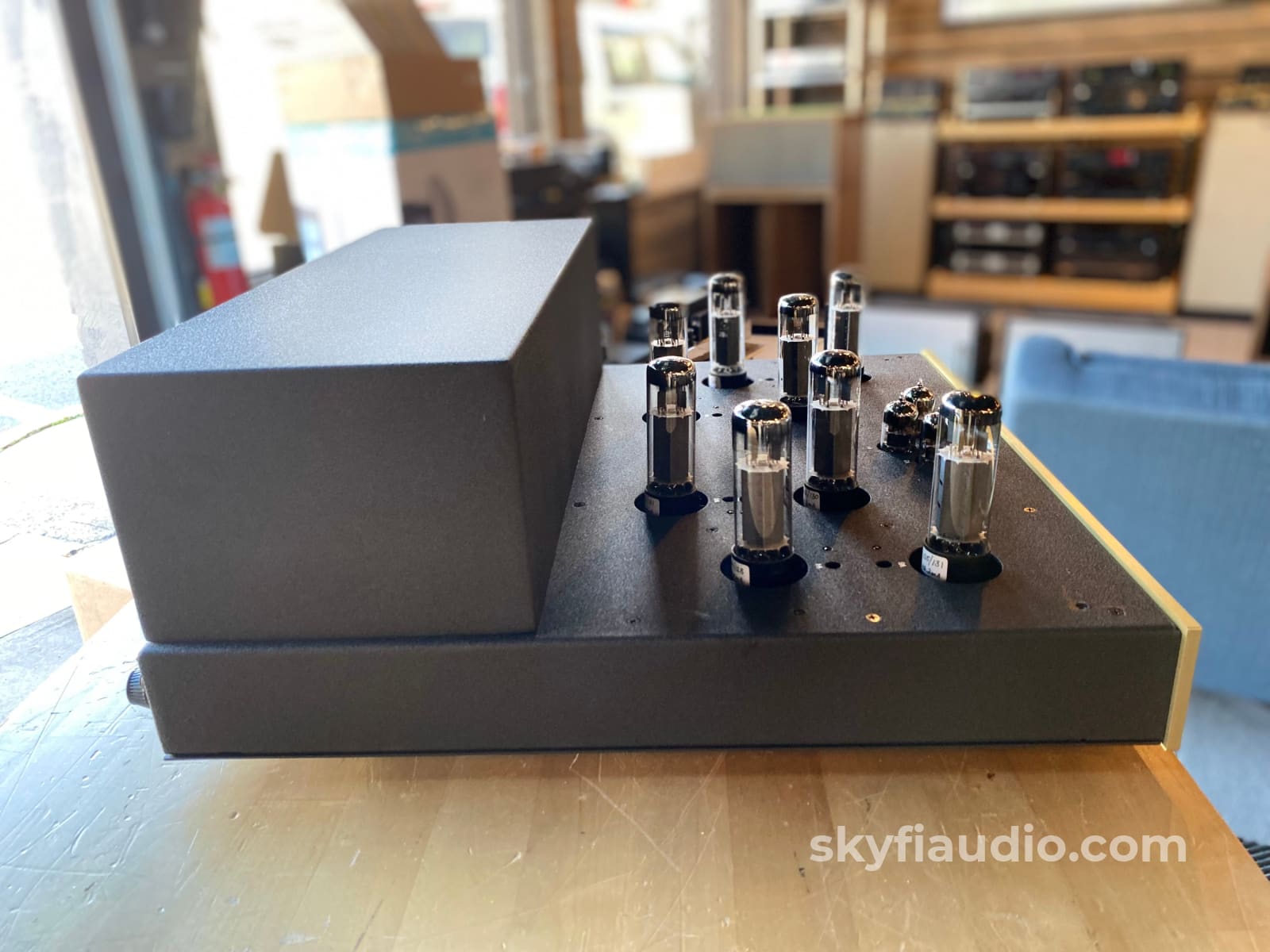
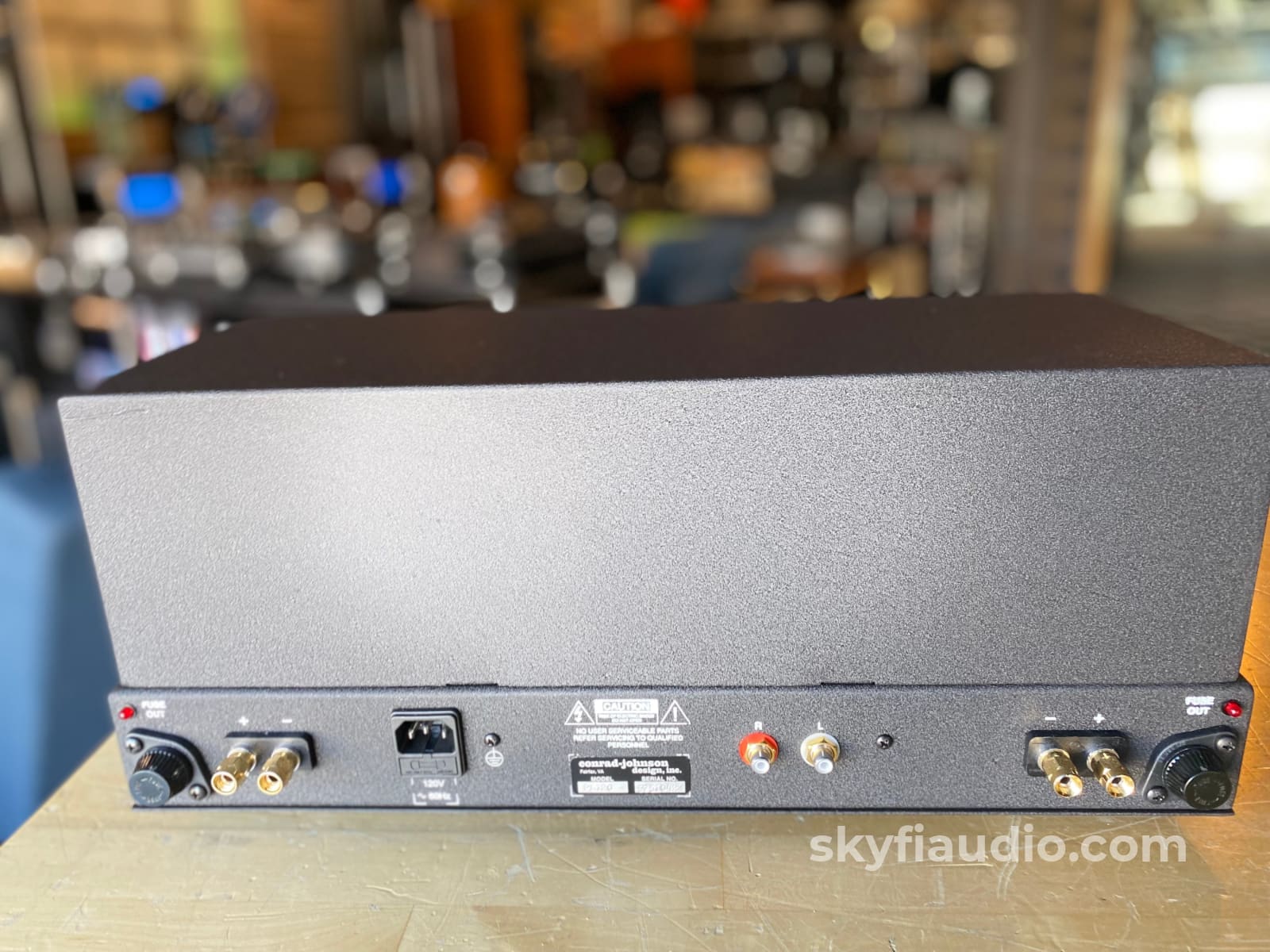
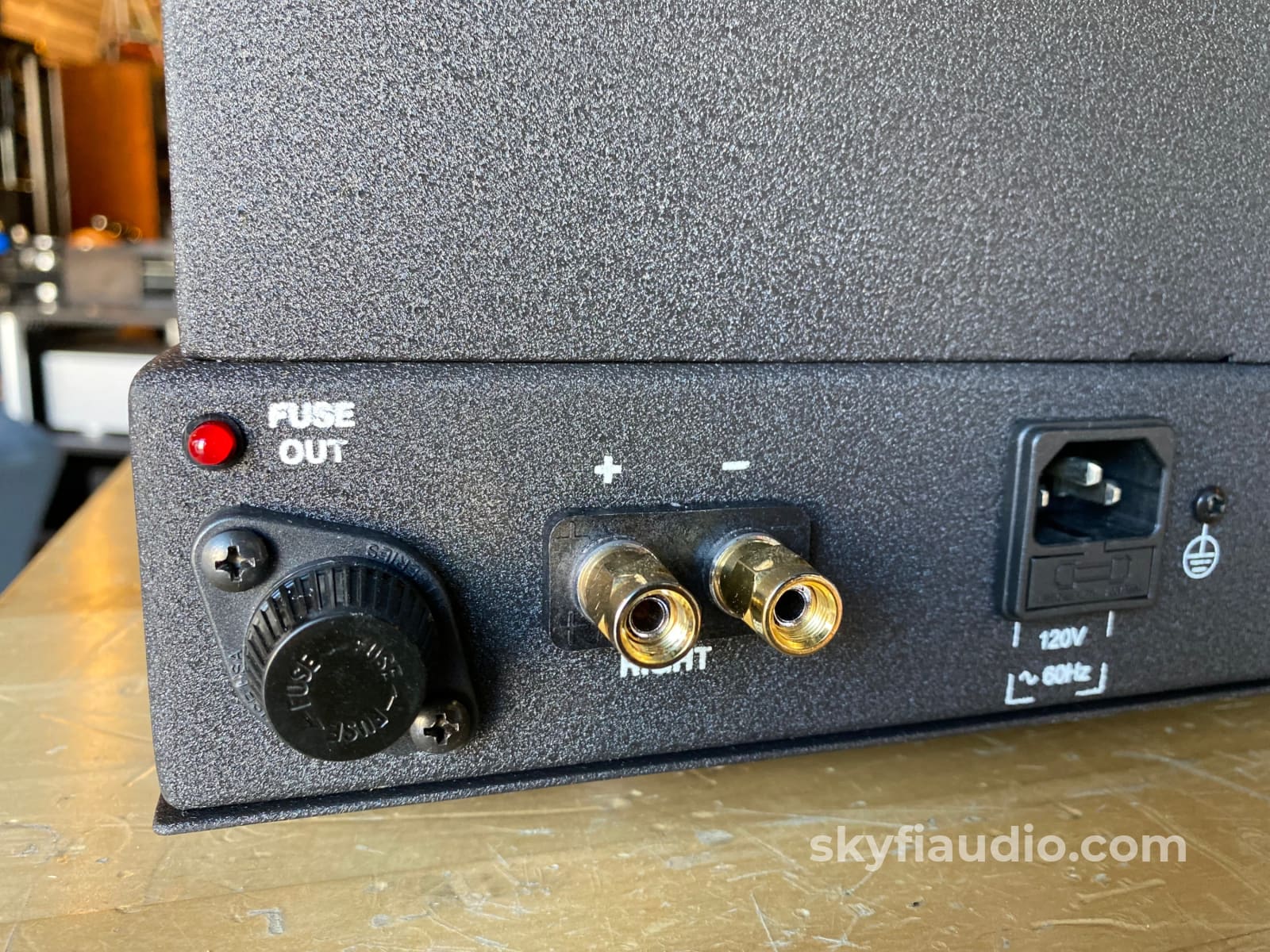

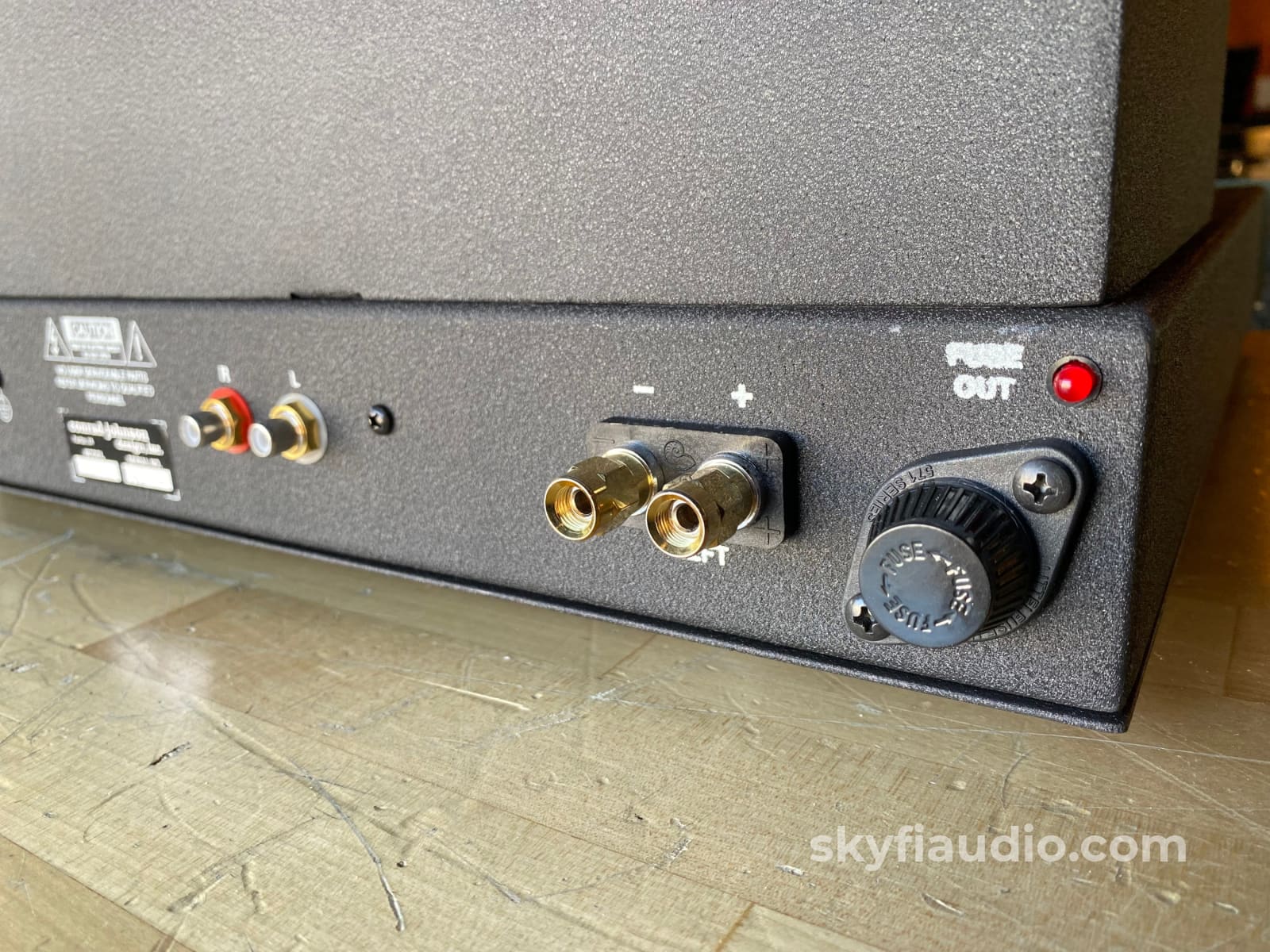

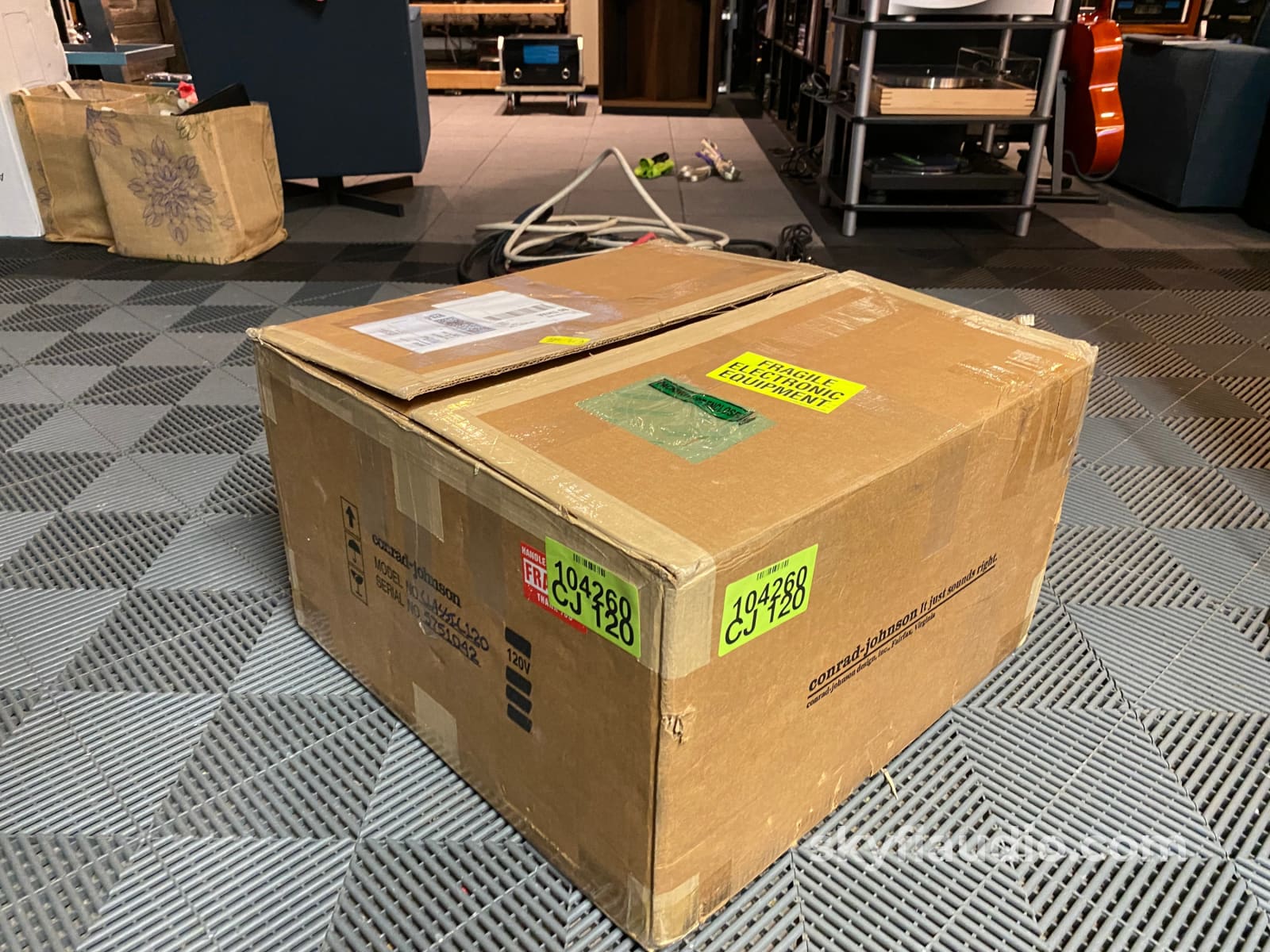
Conrad Johnson Classic One Twenty Tube Amplifier - Complete Kit - 125W x 2
Free Shipping on Most Electronics - Excludes Speakers and Items Requiring Freight - Contiguous U.S. Only
Pickup currently unavailable at SkyFi 479

Conrad Johnson Classic One Twenty Tube Amplifier - Complete Kit - 125W x 2
SkyFi 479
479 South Broad Street
Glen Rock NJ 07452
United States
General:
Complete and perfectly functioning Classic 120 tube amplifier from Conrad Johnson.
This listing is for the non-SE version featuring the more desirable and musical EL34 tube complement.
We installed two matched quad sets of nice National EL34 tubes with some previous use, that tested very good on our modern and professional tube tester.
Cosmetic condition is very clean with little signs of wear.
Includes the manual, original high-quality box, bias tool, and an extra fuse.
Also read below for our official testing process for all tube amps.
Brand Background:
In the mid-1970s, two economists—friends and serious audiophiles—Dr. William Conrad and Dr. Lewis Johnson—were highly dissatisfied with the commercially available equipment of the time and were also perplexed and challenged by the readily apparent sonic differences among components in their own systems. What made these two classic tube systems sound so different? Could the virtues of each be somehow combined? Not content to merely speculate on such issues, Conrad and Johnson decided to systematically investigate by developing and refining a vacuum-tube preamplifier.
The resulting conrad-johnson preamplifier was immediately recognized as a state of the art contender and catapulted Conrad and Johnson into the audio industry.
The most important legacy of conrad-johnson design’s beginnings is the basic methodology which took shape in the course of the development of that first preamplifier.
This methodology has enabled conrad-johnson to develop new products which have routinely been ranked among the most musically satisfying. Few other manufacturers have so consistently received such high praise for their products.
Recommended Cables:
Kimber Kable - RCA Interconnects - Better
Kimber Kable - RCA Interconnects - Best
Kimber Kable - Speaker Cables - Better
Kimber Summit Series Monocle XL Speaker Cables (PAIR) - Best
Kimber Summit Series BiFocal XL Bi-Wire Speaker Cables (PAIR) - Best If Applicable
Kimber Kable - Power Cords - Better
Kimber Kable - Power Cords - Best
Specs:
Power:
CL120 &120SE: 125 Watts per channel from 30 Hz to 15 KHz at no more than 1.5 % THD, both channels driven into 4 Ohms (also available connected for 8 or 16 Ohm loads)
Sensitivity:
CL120 & 120SE: 0.9V rms to rated power
Frequency Response (at 10 Watts):
20 Hz to 20 kHz, +/- .3 dB
Hum and Noise:
96 dB below rated power
Phase:
phase correct
Input Impedance:
100 kOhms
Tube Complement:
3 x 6922, 8 x EL34
Dimensions:
18.88" D x 19" W x 7.63" H
Weight:
75 lb. net
The SkyFi Testing Process for Tube Amplifiers:
We start with a visual inspection of all internal components to make sure that there are no signs of heat stress or damage. Capacitors are checked for telltale signs of predictive failure including bulging, shrunken wrappers, or physical leakage. We also inspect resistors and other passive components for signs of overheating. If tube arcing has occurred in the past we can usually spot discoloration on the output tube sockets. On vintage units we often spot check select capacitors for value and ESR.
If the amplifier passes visual inspection, we move on to a full test of all of the tubes. We use an Amplitrex AT-1000 Tube Tester which is capable of testing both emission and Gm with a high degree of accuracy. We document the results of each tube and replace any weak or suspect tubes before proceeding. When we power on tube amplifiers for the first time we usually use a variac and current limited AC supply and slowly raise the voltage up to nominal mains level while monitoring plate, screen, filament, and negative bias supply voltages where applicable. If everything is in order we feed a low level test signal into the amplifier’s input and monitor its output on an oscilloscope across an 8 ohm dummy load. At this point we are just looking to verify basic function and confirm that the output transformers are not damaged. Once we have verified that the amplifier is safe to operate, we connected it to full mains power. For fixed bias amps we set the bias to manufacturer spec. For cathode biased amps we monitor the plate to cathode voltage to determine if the output tubes are operating in a safe range. Once the output section is verified we move onto bench evaluation.
We start by feeding the input of the amplifier with a low level 1KHz test signal, slowly increase its amplitude while monitoring the amplifier’s output on an oscilloscope for signs of noise, clipping, distortion, or improper channel balance. We continue increasing the signal level until the amplifier reaches clipping. At this point we take an output power measurement and compare it to the spec sheet of the amplifier to verify proper performance. We finish off the bench evaluation with a 1KHz square wave check and a 20Hz to 20KHz sine sweep to assess the amplifier’s frequency response characteristics. This battery of tests will usually reveal if the amplifier has any issues that need further attention.
Before the device leaves the bench, we perform a listening test with actual music using a variety of preferred test tracks. Our benches are outfitted with familiar monitor speakers which help us identify inconsistencies that will not always show up on our test gear. The main things that we are listening for are hum or noise with no signal present, proper center image, clicks, pops, or any other obvious undesirable audio characteristics.
If the unit passes all of these tests it is moved to our long term testing rig where we simulate real word operating conditions for 6-8 hours. For tube amps we like to run this test at least twice. This allows us to monitor the unit for signs of thermal runaway or intermittent issues that only crop up when it has fully come up to temperature. We find this step to be essential, especially for vintage units.
|
Item |
Included |
|
Original Box |
Yes Included |
|
Manual |
Yes Included |
|
Remote |
Not Applicable |
|
Cables |
Yes - Power Only |
|
Physical Condition (Info Here) |
8 / 10 |
|
Working Condition |
10 / 10 |
Choose options
